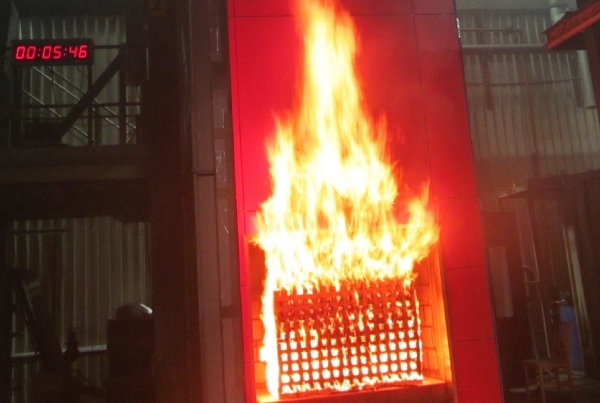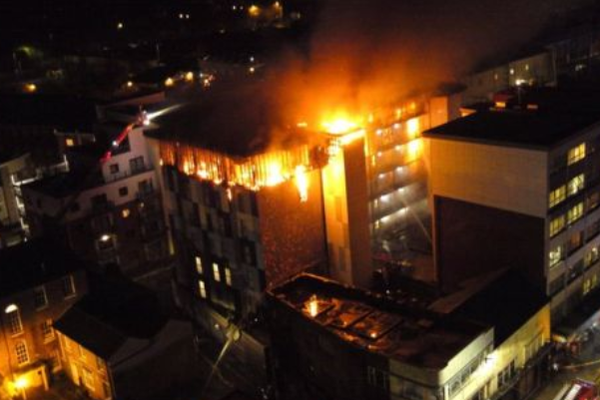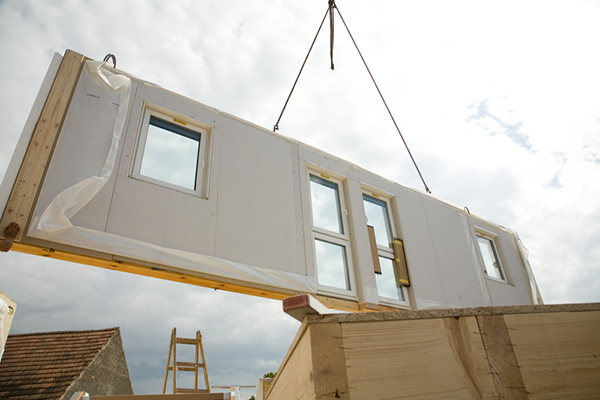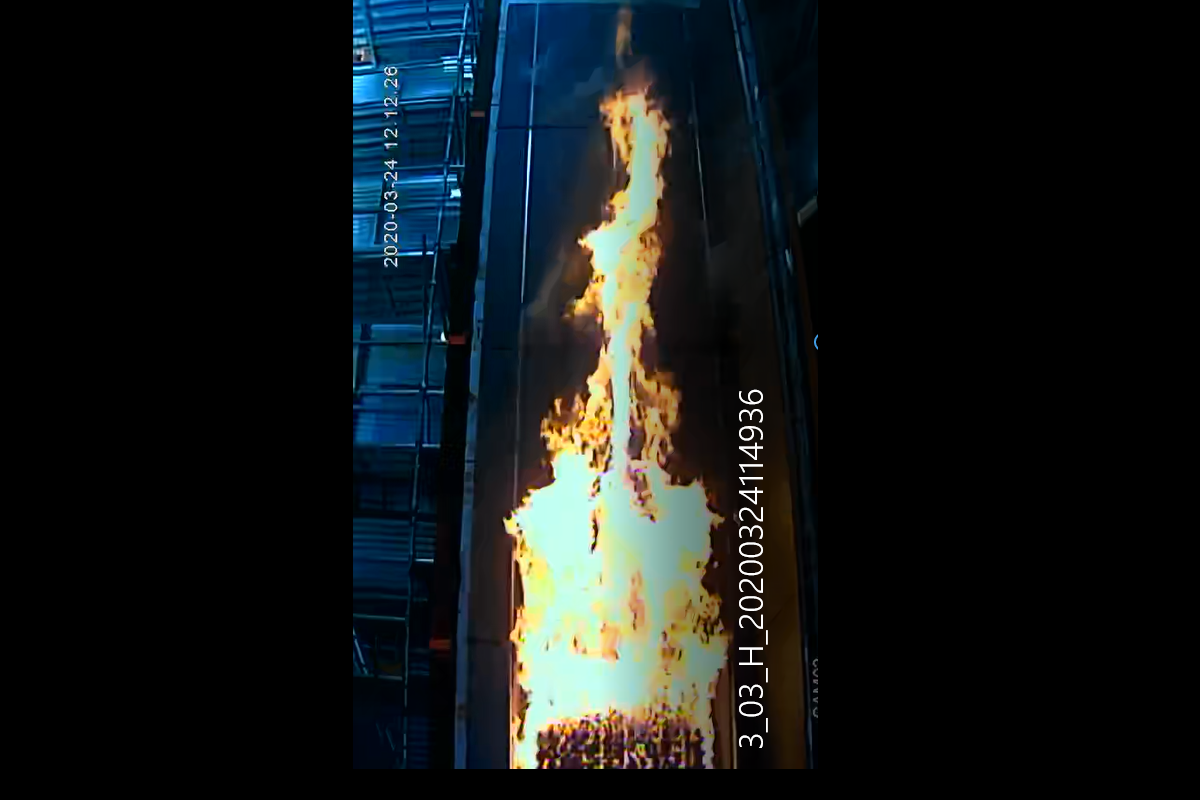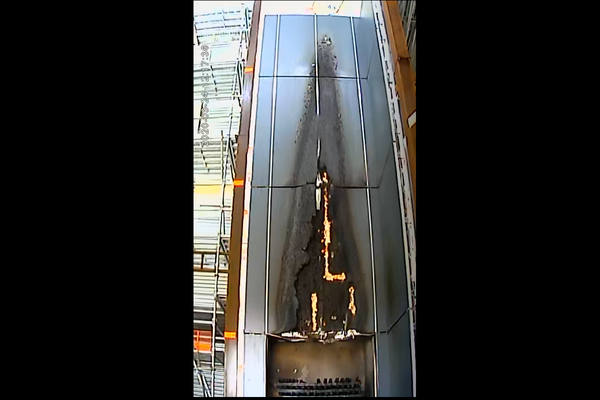You are viewing 1 of your 1 free articles
Cladding fire test ‘does not ensure safety’, multidisciplinary team of academics warn
The test regime which cleared the way for combustible materials to be installed on thousands of tall buildings across the UK “does not ensure adequate fire safety”, a team of researchers has concluded.
A multidisciplinary team of designers, fire safety experts, regulators and researchers undertook a detailed review of the large-scale test used to assess compliance with building regulations – know technically as a ‘BS 8414’ test.
They found it omits key details including windows and other openings, such as vents and flues, which would directly impact the risk from vertical fire and smoke spread. The team also criticised the pass criteria.
A government spokesperson emphasised that a review of building guidance was underway and that its independent expert panel still regard the testing method as "robust".
This testing route has been the subject of detailed scrutiny and much criticism following the Grenfell Tower fire in June 2017 and the subsequent discovery of so many dangerous cladding systems across the country.
In 2018, the English government jettisoned testing as a means of compliance with the regulations, insisting instead that all tall buildings must have non-combustible walls, but it still remains an acceptable route to prove the safety of a façade in Scotland.
Many existing buildings in England base their compliance on evidence from such a test, and the decision on which cladding systems to strip from buildings was also derived from this testing.
The Celotex RS5000 insulation used on Grenfell Tower passed such a test in May 2014 – although it was subsequently withdrawn for ‘inaccuracies’. While this test combined the material with non-combustible cement fibre cladding, it was subsequently widely marketed as “suitable for use on high rises”.
The test involves lighting a crib underneath a nine-metre façade and measuring the fire spread over a 40-minute period. The system fails if flames spread above the top of the rig or heat sensors pass 600°C within the first 15 minutes.
However, it does not contain any features of real-world walls, such as windows and balconies, which might add to the fire spread.
Tests can also pass despite recording temperatures well in excess of 600°C outside the first 15 minutes or on sensors up to three metres above the source fire. In a real-world fire, this is equivalent to two apartments above the blaze.
The history of the BS 8414 test
The history of BS 8414 testing
- In the 1990s, scientists from the Building Research Establishment’s (BRE) Fire Research Station worked with industry to develop a large-scale testing methodology to assess the safety of facades containing combustible materials.
- Following a fire at Garnock Court, Scotland, in 1999, witnesses from the BRE advised a select committee of MPs to introduce this testing route into official guidance. This was done at the next review of official guidance, Approved Document B, in 2000. But it only applied to cladding panels, not insulation.
- Following representations from lobbyists for combustible insulation manufacturers the scope of the test was extended to cover insulation following a further review of Approved Document B in 2005.
- Combinations of cladding and insulation which had not passed tests were subsequently approved for use on the basis of test evidence from other systems and combustible insulation was installed on thousands of buildings nationwide. This process was formalised into a ‘desktop study’ route to compliance by industry guidance in 2015.
- In June 2017, a huge cladding fire at Grenfell Tower, west London resulted in 72 deaths. The primary insulation, Celotex RS5000 had been part of a system which passed a BS8414 test in 2014 with non-combustible cladding panels. It was subsequently marketed as “suitable for use on high rises”.
- A series of BS 8414 tests were developed in summer 2017 to assess the relative danger of aluminium composite material (ACM) cladding systems. The government then indicated it would continue allowing combinations cleared through this route to be used on buildings, but u-turned under pressure from survivors and banned combustibles outright.
The BS 8414 testing methodology has recently been reviewed, with some small changes as a result, but the researchers said these “do not address some of the inadequacies highlighted”.
Published in Fire Technology – a Springer Nature journal – the research calls for a review of the current standards for testing external walls. This includes the need for a thorough revision of the pass criteria to align with specific fire safety objectives.
Professor Richard Hull, professor of chemistry and fire science at UCLan, said: “Despite a number of measures being implemented since Grenfell Tower, including the combustibles ban for residential buildings constructed after February 2019, the process by which combustible façades are permitted on tall buildings in England still does not ensure adequate fire safety.
“With over 500,000 people across the UK still estimated to be living in buildings with combustible cladding, it is imperative that the BS 8414 test, and the BR 135 criteria, are reviewed further. We are calling on the government to instigate an independent review of the current tests and criteria to ensure that they are robust and representative of actual buildings.”
Jim Glocking, technical director at the Fire Protection Association added: "This research has shown that the fire safety of occupants in buildings with combustible, vented facades cannot be assured without additional, non-compulsory testing, even following the revised standard. An extension of scope to include assessment of the fire toxicity of combustible products would also seem prudent for some higher risk building types and occupant categories."
An MHCLG spokesperson said: “Residents’ safety remains our priority and we are bringing forward the biggest changes in building safety in a generation.
“We are providing an unprecedented £1.6bn in funding to ensure unsafe cladding, where it remains in place, is removed as soon as possible and are clear that we will not accept any more excuses from building owners who have yet to take action.”
